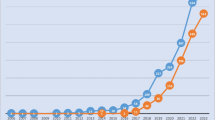Abstract
The nowadays’ availability of neural networks designed on power-efficient neuromorphic computing architectures gives rise to the question of applying spiking neural networks to practical machine learning tasks. A spiking network can be used in the classification task after mapping synaptic weights from the trained formal neural network to the spiking one of same topology. We show the applicability of this approach to practical tasks and investigate the influence of spiking neural network parameters on the classification accuracy. Obtained results demonstrate that the mapping with further tuning of spiking neuron network parameters may improve the classification accuracy.
Similar content being viewed by others
References
S. Mitra, S. Fusi, and G. Indiveri, “Real-time classification of complex patterns using spike-based learning in neuromorphic VLSI,” IEEE Trans. Biomed. Circuits Syst. 3 (1), 32–42 (2009).
P. U. Diehl, G. Zarrella, A. Cassidy, B. U. Pedroni, and E. Neftci, “Conversion of artificial recurrent neural networks to spiking neural networks for low-power neuromorphic hardware,” arXiv:1601.04187 (2016).
Y. Cao, Ch. Yang, and D. Khosla, “Spiking deep convolutional neural networks for energy-efficient object recognition,” Int. J. Comput. Vision 113, 54–66 (2015).
Ch. Eliasmith, How to Build a Brain: A Neural Architecture for Biological Cognition (Oxford Univ. Press, Oxford, 2013).
E. Hunsberger and Ch. Eliasmith, “Spiking deep networks with LIF neurons,” arXiv:1510.08829 (2015).
P. U. Diehl, D. Neil, J. Binas, M. Cook, Sh.-Ch. Liu, and M. Pfeiffer, “Fast-classifying, high-accuracy spiking deep networks through weight and threshold balancing,” in Proceedings of the International Joint Conference on Neural Networks (IEEE, 2015), pp. 1–8.
O. V. Zagorovskaya, T. A. Litvinova, and O. A. Litvinova, “Electronic corpus of student essays and its applications in modern humanity studies,” Mir Nauki, Kul’tury, Obrazov. 3 (34), 387–389 (2012).
Author information
Authors and Affiliations
Corresponding author
Additional information
Submitted by A. M. Elizarov
Rights and permissions
About this article
Cite this article
Sboev, A.G., Serenko, A.V. & Vlasov, D.S. Effective calculations on neuromorphic hardware based on spiking neural network approaches. Lobachevskii J Math 38, 964–966 (2017). https://doi.org/10.1134/S1995080217050304
Received:
Published:
Issue Date:
DOI: https://doi.org/10.1134/S1995080217050304




